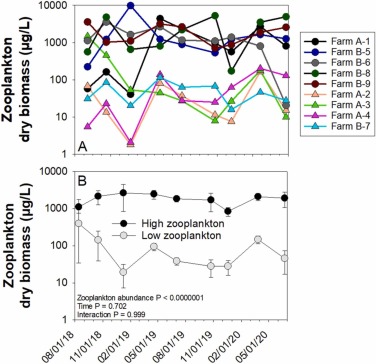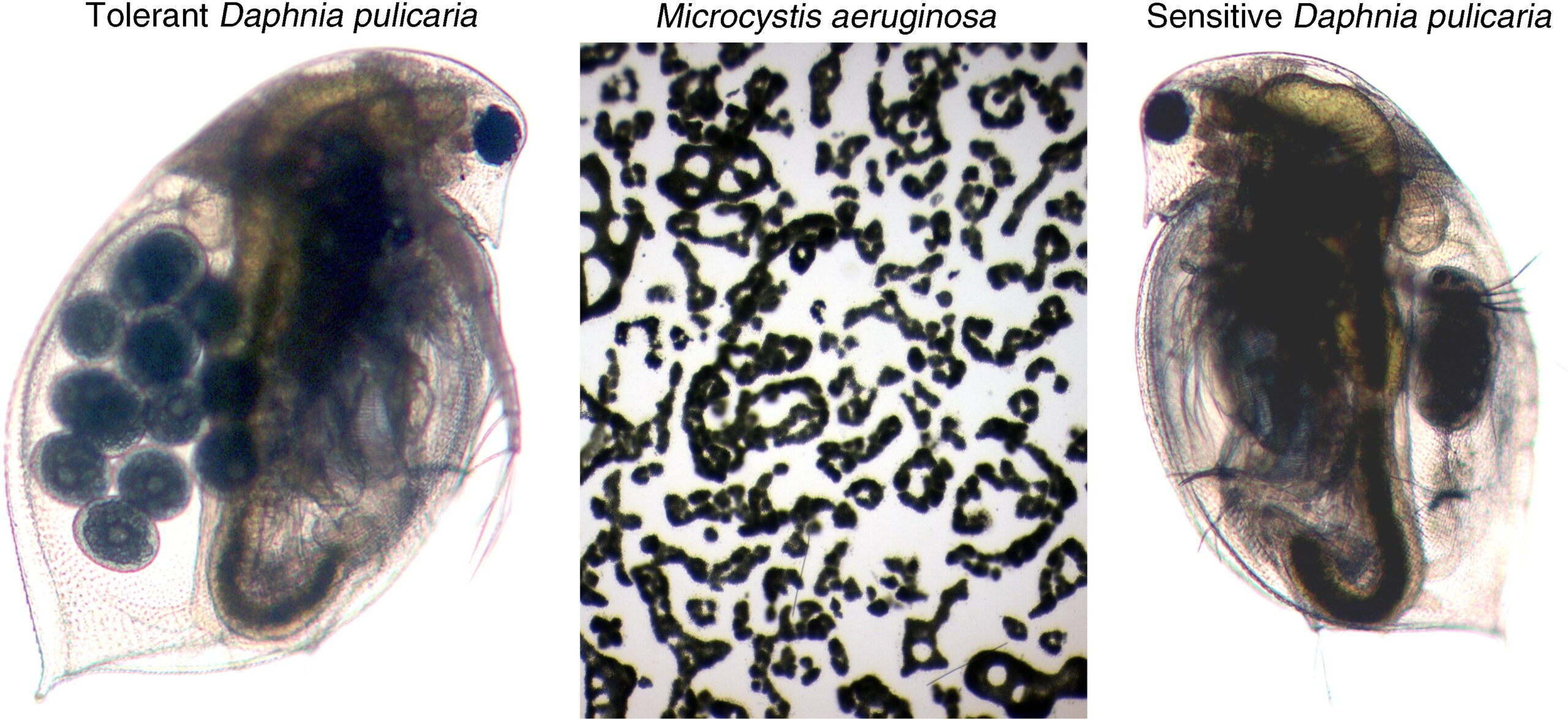Keyword: trophic cascades

Belfiore, A., R. P. Buley, E. G. Fernandez-Figueroa, M. Gladfelter, and A. E. Wilson. 2021. Zooplankton as an alternative method for controlling phytoplankton in catfish pond aquaculture. Aquaculture Reports 21:100897.
Abstract
In pond aquaculture, production of toxins and off-flavor compounds by cyanobacteria can negatively affect fish health and production. Studies have explored chemical or physical methods for controlling algal blooms in aquaculture ponds, which although effective, may be short-lived and can negatively impact non-target organisms, including aquaculture species. Food web manipulations have a long history in lake and fisheries management to improve water quality, but have been rarely considered in aquaculture. This study examined zooplankton and phytoplankton communities, cyanobacterial toxins, and nutrients in nine catfish aquaculture farm-ponds in west Alabama, USA. The goal of this project was to track phytoplankton and zooplankton abundances with respect to each other, with and without efforts to reduce zooplanktivorous fish in some of the ponds. During this project, farm managers reduced zooplanktivorous fish abundance in select ponds to create a large-scale field experiment that addressed the role of zooplankton control of phytoplankton in hypereutrophic catfish aquaculture ponds when zooplanktivorous fish were or were not excluded. There was a strong negative effect of zooplankton on phytoplankton, including cyanobacteria, despite high nutrient concentrations. Although high zooplankton ponds sustained elevated zooplankton biomass during much of this study, including when pond temperatures exceeded 30 °C, the effect of zooplankton on phytoplankton was most pronounced during the non-growing season (November–April). In addition, total ammonia nitrogen was significantly higher in high zooplankton ponds, which could lead to ammonia toxicity in fish at elevated temperature and pH. Our findings suggest that zooplankton biomanipulation may be an efficient method to control algal blooms in farm-pond catfish aquaculture.

Chislock, M. F., O. Sarnelle, B. K. Olsen, E. Doster, and A. E. Wilson. 2013. Large effects of consumer offense on ecosystem structure and function. Ecology 94(11):2375-2380.
Abstract
Study of the role of within-species adaptation in ecological dynamics has focused largely on prey adaptations that reduce consumption risk (prey defense). Few, if any, studies have examined how consumer adaptations to overcome prey defenses (consumer offense) affect ecosystem structure and function. We manipulated two sets of genotypes of a planktonic herbivore (Daphnia pulicaria) in a highly productive ecosystem with abundant toxic prey (cyanobacteria). The two sets of consumer genotypes varied widely in their tolerance of toxic cyanobacteria in the diet (i.e., sensitive vs. tolerant). We found a large effect of tolerant D. pulicaria on phytoplankton biomass and gross primary productivity but no effect of sensitive genotypes, this result stemming from genotype-specific differences in population growth in the presence of toxic prey. The former effect was as large as effects seen in previous Daphnia manipulations at similar productivity levels. Thus, we demonstrated that the effect of consumer genotypes with contrasting offensive adaptations was as large as the effect of consumer presence/absence.